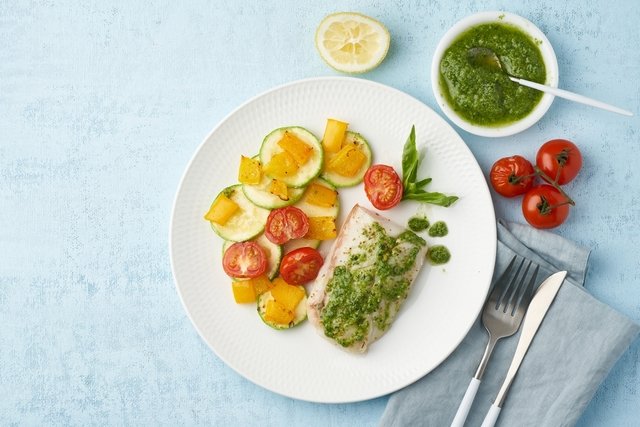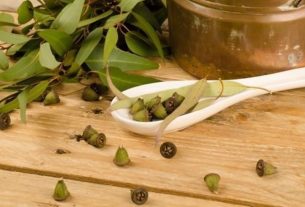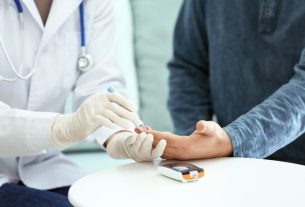The diet for Helicobacter pylori (H. pylori) is characterized by being low in fat, to avoid poor digestion, you should prefer easily digestible foods, such as peeled or cooked fruits and vegetables, especially when there are active symptoms.
Furthermore, it is also important to divide your meals, eating between 5 and 6 meals a day, drinking liquids outside of the main meals, eating slowly and chewing your food well, in addition to moderating or avoiding the consumption of coffee and alcoholic beverages.
A H. pylori is a bacteria that lives in the stomach and normally causes gastritis, but can also cause ulcers, stomach cancer, vitamin B12 deficiency, anemia, diabetes and fatty liver. Therefore, in the presence of symptoms indicative of infection by H. pylori, It is important to consult a gastroenterologist to start treatment as soon as possible. See how H Pylori is treated.

What to eat when treating H. pylori
Foods that help reduce symptoms and promote faster recovery during H. pylori treatment are:
1. Easily digestible carbohydrates
In moments of discomfort and symptoms of gastritis caused by the bacteria H. pylori, it is recommended to consume easily digestible cereals, such as white rice, white bread, white pasta, biscuits such as cream cracker and corn or wheat starches, which are high in starch and low in fiber.
When the treatment begins to take effect and the discomfort begins to subside, whole foods can be gradually incorporated according to the person’s tolerance.
2. Fresh fruits and vegetables
In the case of fresh fruits and vegetables, in case of active symptoms, such as heartburn and/or stomach pain, for example, the ideal is for fruits and vegetables to be consumed without skin, without seeds and preferably cooked. This way it will be much easier to digest and improve intestinal functioning.
The most recommended fruits are peeled and/or cooked apples and pears, bananas, watermelon, melon and papaya.
3. Protein-rich foods
Some protein-rich foods, such as white meats, fish, eggs, white or low-fat cheeses, and lean red meats, have less fat. Therefore, this type of protein is easier to digest because it does not spend as much time in the stomach, preventing the appearance of symptoms such as heartburn and burning in the stomach.
4. Probiotics
Probiotics are present in foods such as yogurt and kefir, and can also be found in the form of capsule or powder supplements.
Probiotics are beneficial bacteria that stimulate the production of substances that help fight H. Pylori, and which reduce the side effects that may arise during the treatment of the infection with antibiotics, such as diarrhea and poor digestion, for example. See more about what they are and the benefits of probiotics.
5. Foods rich in omega 3 and omega 6
Omega-3 and omega-6 are healthy fats that can help reduce inflammation in the stomach and prevent the growth of Helicobacter pylori, helping to treat the disease.
Foods that can be consumed during treatment against the H. pylori bacteria and are rich in omega 3 are fish, such as tuna, mackerel, trout and cod, as well as olive oil.
Diet menu for H. pylori
The following table provides an example of a 3-day menu that can be used during treatment against H. pylori:
The quantities included in the menu vary according to age, sex, physical activity and whether you have any associated illness or not. Therefore, the ideal is to go to a nutritionist to carry out a complete assessment and create a nutritional plan suited to each person’s needs.
If you want an individualized diet, make an appointment with the nutritionist closest to you:
Taking care of your health has never been easier!
During and after treatment, it is important to always wash fruits and vegetables well before consuming them, as the H. pylori may be present in raw vegetables. Find out how H. pylori is transmitted.
What not to eat during treatment for H. pylori
During treatment for H. pylori It is not recommended to eat the following foods:
- Coffee, chocolate, green tea and black teaas they contain caffeine, a substance that stimulates bowel movements and the secretion of gastric juice, causing more irritation;
- Soft drinks and carbonated drinks, as they can cause abdominal distension, pain and reflux;
- Foods rich in sugar, such as ice cream, cakes, cookies and sweets;
- Alcoholic beverages, by increasing inflammation in the stomach;
- Pepper, hot sauces and spicy foods, such as mustard, ketchup, mayonnaise, Worcestershire sauce, soy sauce and ready-made seasonings;
- Greasy food, such as fried foods, yellow cheeses, butter, pizza, hamburgers, French fries, because they remain in the stomach longer to be digested, increasing the production of acids and causing discomfort;
- Processed meats and canned foods, as they are rich in fats and contain preservatives and chemical additives that irritate the stomach, increasing inflammation.
Furthermore, milk should only be avoided in cases where it causes discomfort. If it is well tolerated, skimmed milk can be consumed.
Fiber-rich foods should be avoided only while symptoms associated with fiber occur. H. pylori. Once the bacteria have been eradicated, they must be included again in the diet.
Example of menu to follow at the end of treatment
Once discomfort begins to improve, symptoms subside, and H. Pylori bacteria are eradicated, foods from a regular diet can be gradually incorporated. Below we provide an example of a menu for 3 days:
The quantities and types of food on the menu vary according to age, sex, physical activity and the presence of any associated disease or not. Therefore, the ideal is to go to a nutritionist to carry out a complete assessment and create an individualized nutritional plan.
How to alleviate unpleasant treatment symptoms
Treatment to combat H. pylori it normally lasts between 7 and 14 days and is done with the use of medications such as omeprazole and pantoprazole, and antibiotics, such as amoxicillin and clarithromycin, which can cause some side effects, such as:
1. Metallic taste in the mouth
It appears right at the beginning of treatment and can worsen as the days go by. To help alleviate it, you can season the salad with vinegar and, when brushing your teeth, sprinkle baking soda on the toothpaste. This will help neutralize acids in the mouth and increase saliva production, helping to reduce the metallic taste.
2. Nausea and stomach pain
Nausea and stomach pain usually appear from the second day of treatment, and to avoid them it is important to drink plenty of water, rest and consume easily digestible foods, such as yogurt, cooked fruits and vegetables and white cheeses.
To alleviate morning sickness, you can drink ginger tea as soon as you wake up, in addition to avoiding drinking large volumes of liquids at once. See how to use ginger to relieve nausea.
3. Diarrhea
Diarrhea normally appears from the third day of treatment, as antibiotics, in addition to eliminating the H. pylorithey also eliminate beneficial bacteria that protect the intestine, altering the intestinal flora.
To combat diarrhea and replenish intestinal flora, you can take 1 low-fat natural yogurt or kefir per day and consume easily digestible foods, such as soups, purees, fish and white meat. Discover other tips on how to treat diarrhea.




